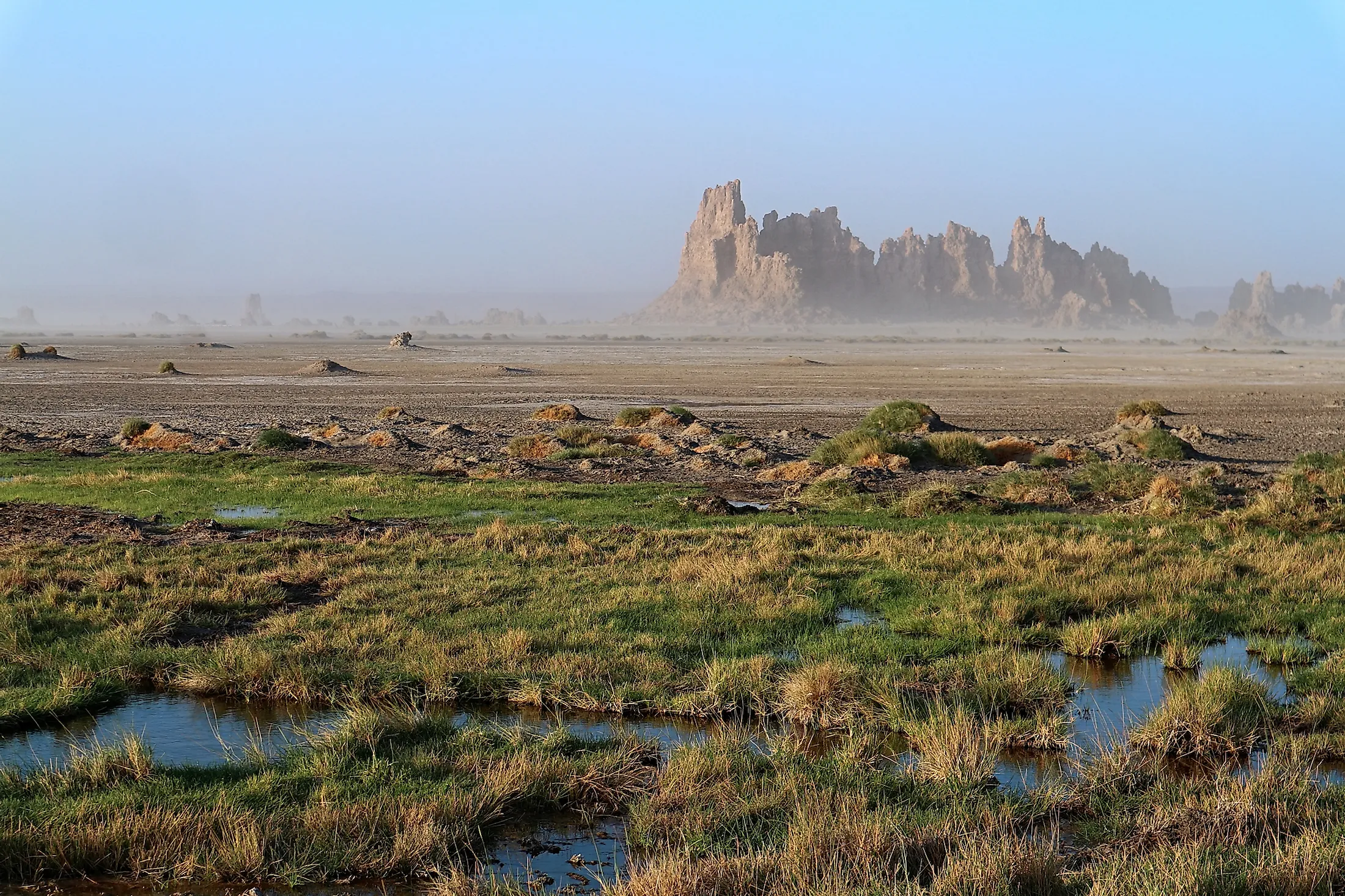
Lake Abbe
Lake Abbe is a salt lake that stretches between two East African nations. Sometimes called Lake Abhe Bad, the lake exists on both sides of the Ethiopia and Djibouti border in the Afar Depression and is known for both its high-saline content and the exotic wildlife it attracts. Lake Abbe is surrounded by sand dunes and unstable roads, requiring special off-roading vehicles. For that reason, and because of the harsh desert climate, Lake Abbe is considered one of the most remote places on the planet.
About Lake Abbe
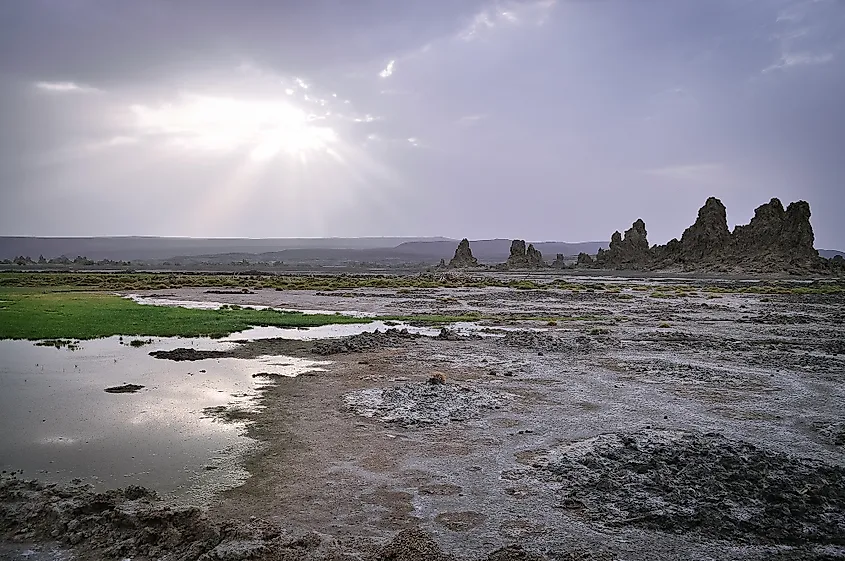
Lake Abbe is found within the salt flats of northern Ethiopia and Djibouti. The lake is found in the lowlands of East Africa and is surrounded by salt flats in each direction for miles. Nomadic peoples herd flocks of goats and camels over the region's vast, flat landscape as they have for centuries, but outsiders rarely visit the area due to its unforgiving climate.
The lake is the endpoint for Ethiopia's Awash River, which originates in the Ethiopian Highland Plateau, though it empties into a chain of interconnected lakes throughout the region. Lake Abbe is a no-drain lake. Instead, pure water evaporates from the lake's surface, leaving behind highly salinated water. The landscape around Lake Abbe is almost entirely desert except for the naturally occurring limestone chimneys. Some of these geological formations can reach 50 meters in height and are known to erupt with steaming sulfur, the result of geothermal fluid mixing with lake water underground.
Lake Abbe is measured as being 19 km wide and 17 km long, with approximately 34,000 hectares of open water currently. The lakewater is hyper-salinated and hazardous to human health. The white salt crust can be seen along the lake's edge, giving way to ashen clay earth, blueish salt flats, and rock formations. Temperatures around the lake reach as high as 45 degrees in the summertime. With the advent of climate change, these temperatures are only expected to increase over time.
The Afar Depression
Lake Abbe sits at a meeting point where the Arabian, Nubian, and Somali tectonic plates converge. This point is known as the Afar Depression. The depression is also home to Lake Assale, which, at 150 meters below sea level, is the lowest point in Africa. Seen as invaluable by paleontologists for decades, the Afar Depression is of continued importance to the scientific community.
The Afar Depression is where the earliest-dated human fossil specimens have been discovered. Lucy, the pre-historic human ancestor and the basis for the 2014 film starring Scarlett Johanssen, was discovered in the Afar Depression. Because of this, the area has been referred to by scientists as the Cradle of Humanity.
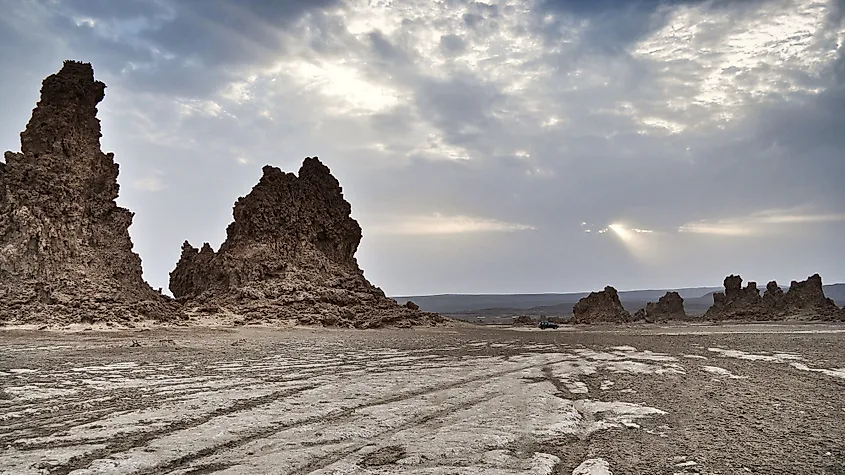
Geologists are also interested in this convergence of tectonic plates. Lake Abbe's otherworldly landscape is caused by the splitting that these three plates are currently undergoing. The resulting force from this geological event has caused the creation of the limestone spires that surround the lake. The retreating plates allowed for magma to escape through the lake bottom while deposits of volcanically heated limestone led to the creation of the desert spires. These structures only became visible after the lake was partially drained in 1950 for irrigation purposes. Scientists believe the shifting plates will lead to Lake Abbe becoming the site of a new ocean in approximately 10 million years as the Red Sea floods Djibouti's coastal highlands.
Ecology Of Lake Abbe
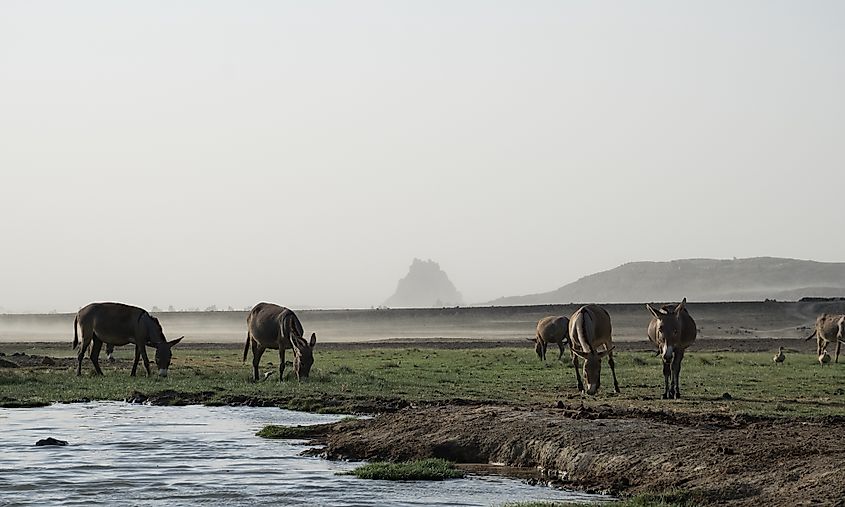
Lake Abbe and the surrounding area is largely inhospitable. A small encampment of the Afar Tribe can be found near the lake. The Afar are largely pastoralists and can be seen leading donkeys and goats near the few water sources available around the lake. Few creatures can survive in the harsh environment of the Afar Depression. Swarms of mosquitos and other pests are some of the few exceptions and seem well-suited to thrive in the desert biome. Visitors to the lake will have to stay in an Afar encampment with approximately 15 huts featuring mosquito netting and are encouraged to bring bug spray.
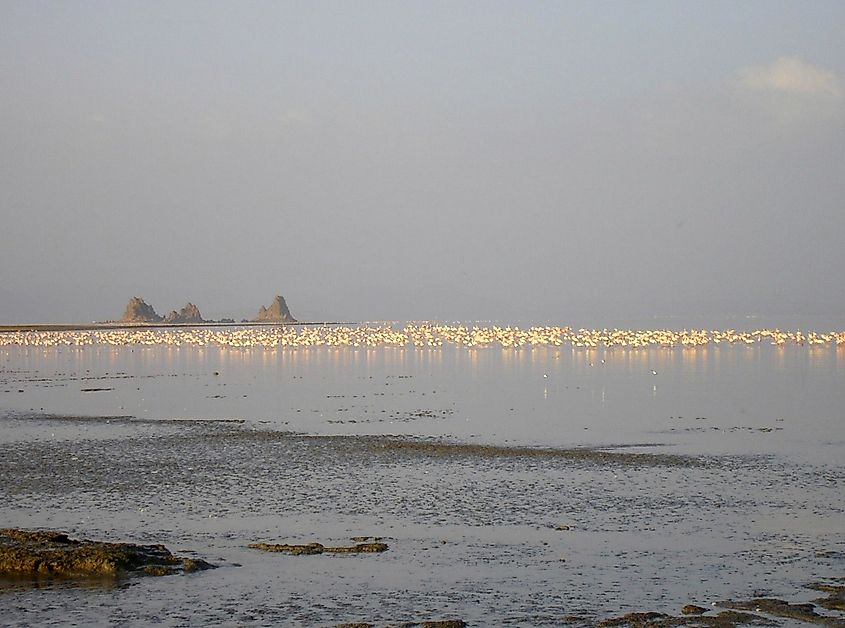
The lake does not receive many visitors due to its climate and the difficulty of reaching it. Its unique appearance and remoteness evoke the surface of the moon. For those who do make the arduous trip, seeing the flamingoes of Lake Abbe is usually one of the most incredible parts of the trip. Visitors to the lake will likely have to camp overnight to see the birds. Flocks of the bright pink birds are the lake's sole true residents. They are naturally protected as they frolic in the water by the soft, quicksand-like mud, which quickly envelops those who get too close to the water.
Accessing Lake Abbe
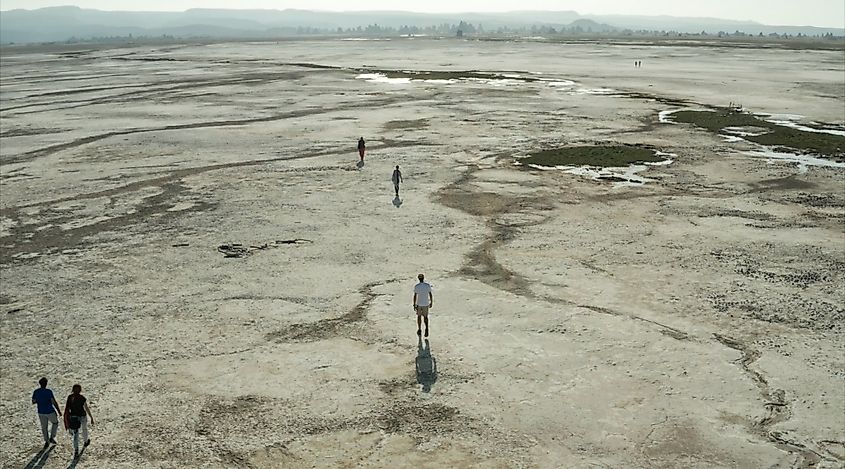
Lake Abbe is approximately 9 hours by car from the nearest town. There are only a smattering of guides who can bring outsiders to the lake since the journey is so difficult. Besides the necessary equipment, knowledge of the roads is also necessary for anyone looking to make a trip to this secluded part of the world. As the region is becoming less fertile due to climate change, tourism to Lake Abbe is crucial for the Afar people's survival.
There are no marked roads on the way to Lake Abbe. Infrastructure such as electricity or municipal sewage is nonexistent. According to the European Space Agency, Monitoring this region is largely by satellite as a result of the area's hostile environment and lack of development.
Access to Lake Abbe can only be accomplished through off-road vehicles. Lake Abbe is located 90 km from the main capital, Djibouti, and the journey is only partially possible on paved roads. For several hours, visitors and their guides will need all-wheel drive. Trucks with 4x4 capacity are the only vehicles that can safely navigate the roads and dunes that must be traversed to reach the lake without becoming stuck in the desert. Thus, as of now, Lake Abbe exists outside the modern world's scope and is one of the most inaccessible places on Earth.











